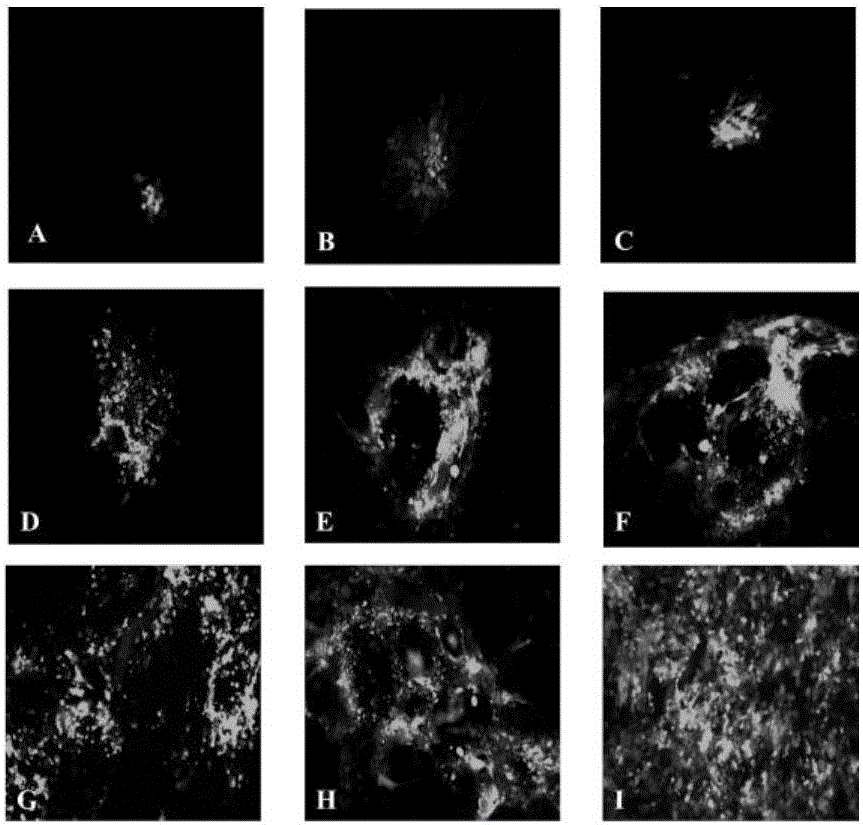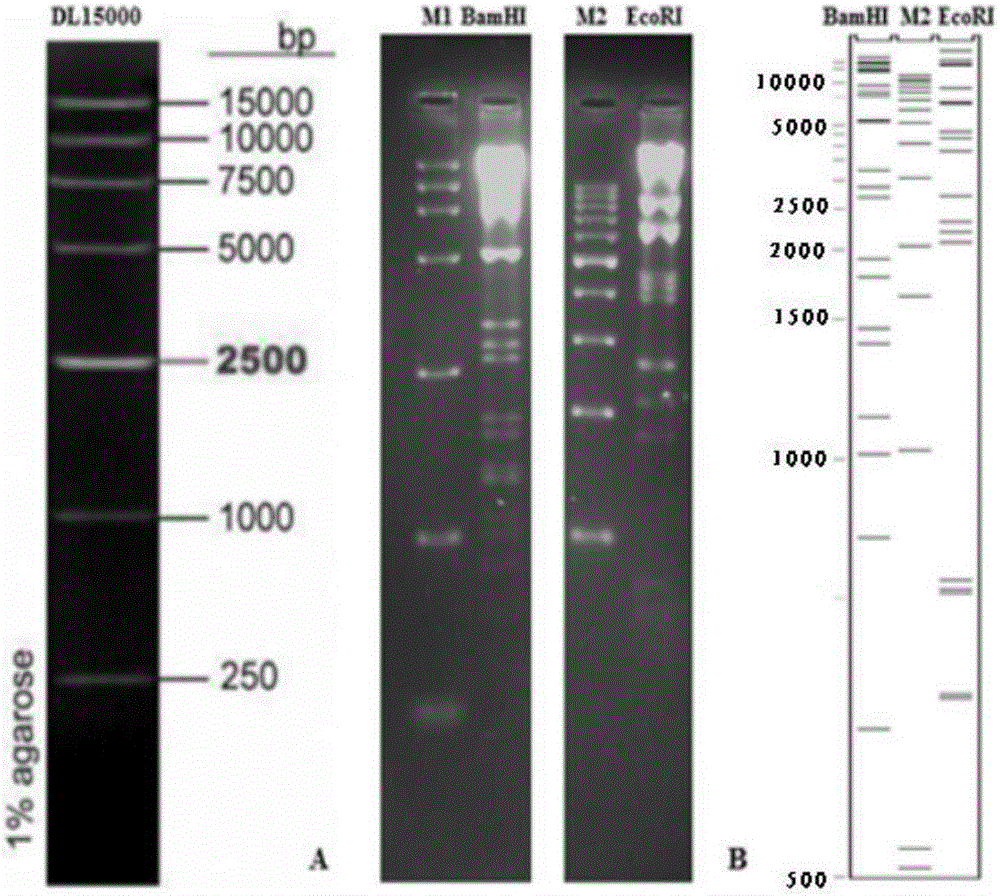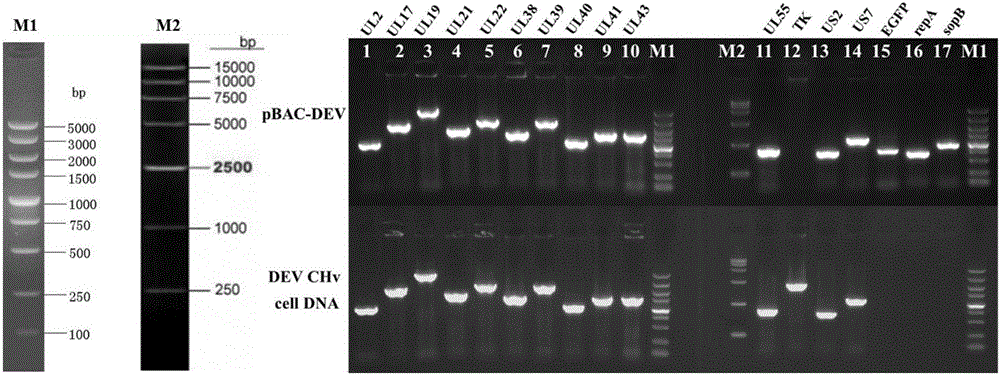Establishing method of bacterial artificial chromosome recombinant duck plague virus rescue system platform and application
An artificial chromosome and duck plague virus technology, applied in the field of veterinary medicine, can solve the problems of unknown gene function, genetic manipulation and difficulty in constructing recombinant virus
- Summary
- Abstract
- Description
- Claims
- Application Information
AI Technical Summary
Problems solved by technology
Method used
Image
Examples
Embodiment 1
[0061] Example 1 Bacterial Artificial Chromosome Recombination Duck Plague Virus Rescue System Platform Construction
[0062] 1. Primer design: According to the TK gene and its left and right gene sequences, pEGFP-C1 sequence and pBeloBAC11 sequence, the primers used to construct the bacterial artificial chromosome recombinant duck plague virus rescue platform are designed as shown in Table 1:
[0063] Table 1 Primers used in the construction of bacterial artificial chromosome recombinant duck plague virus rescue platform
[0064]
[0065]
[0066] 2 Construction of bacterial artificial chromosome recombinant duck plague virus transfer vector
[0067] The insertion site of exogenous BAC sequence in constructing bacterial artificial chromosome recombination duck plague virus rescue system platform is the TK region of DPVCHv. Design and construct a bacterial artificial chromosome transfer vector containing left and right homologous arms of TK gene, and obtain recombinant ...
Embodiment 2
[0191] Example 2 Construction of recombinant duck plague virus UL55 gene deletion strain and its in vitro biological characteristics
[0192] 1 strain / plasmid
[0193] The maps of plasmid strains pKD46, pKD4, and pCP20 used for Red recombination are as follows: Figure 7 shown.
[0194] 2 Primer design
[0195] The primers used to construct the UL55 gene deletion and its reversion mutant strains in this example are shown in Table 6.
[0196] Table 6 is used for the related primers of RED recombination
[0197]
[0198] 3 The first round of RED recombination to knock out the UL55 gene
[0199] 3.1 Amplification and recovery of UL55 gene homologous targeting fragment
[0200] The UL55 sequence to be knocked out is replaced by the targeting fragment of the kanamycin resistance gene locus with UL55 gene homology arms and FRT sequences on both sides. Using the plasmid pKD4 as a template, the kanamycin resistance gene was amplified. The 20 bases at the 3' end of the primer...
PUM
 Login to View More
Login to View More Abstract
Description
Claims
Application Information
 Login to View More
Login to View More - R&D
- Intellectual Property
- Life Sciences
- Materials
- Tech Scout
- Unparalleled Data Quality
- Higher Quality Content
- 60% Fewer Hallucinations
Browse by: Latest US Patents, China's latest patents, Technical Efficacy Thesaurus, Application Domain, Technology Topic, Popular Technical Reports.
© 2025 PatSnap. All rights reserved.Legal|Privacy policy|Modern Slavery Act Transparency Statement|Sitemap|About US| Contact US: help@patsnap.com



